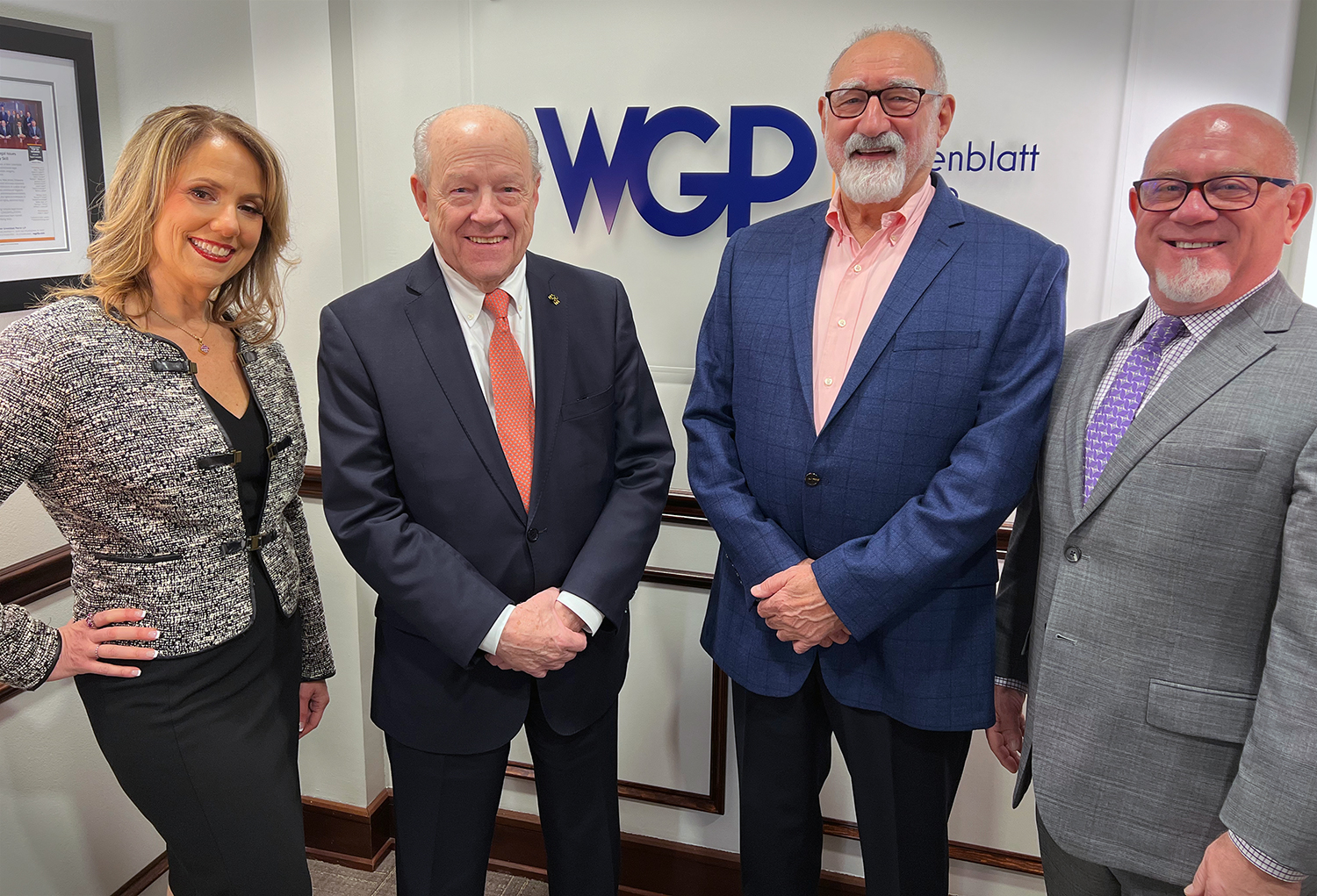By: devweb
By Peter F. Vaira, for the November 20, 2017 edition of The Legal Intelligencer newspaper
Paintings of Lancaster County hang on the walls of his chambers. There is a photo of Judge Guy Bard, the first federal judge from Lancaster County. Chief Judge Stengel is the fourth federal judge from Lancaster County; but, make no mistake, he is no farm country judge. He is the equivalent of a chief operating officer of a fortune 500 company. He is a manager. Shortly after he became chief judge on Aug. 1, he visited all district court judges and magistrate judges with a legal pad in hand and asked questions. He wanted to get a grasp on what was happening, what challenges he faced, and what areas needed improvement. “I am a good listener,” he said. Many gave him constructive comments. He consulted the new clerk of court. He then started a review of the entire
operation of the Eastern District.
He said, “This is a time of transition. We had a clerk of court who was here for 37 years. We have a new clerk of court who came from a large state court, and she brings a new perspective. She is tasked with a large scale review and examination of how our court does business, how case loads are managed, what HR and IT protocols are followed, and many other issues. I meet with her every morning.”
Chief Judge Stengel was surprised at the amount of additional administrative duties the position of chief judge required. He recited the size of the district: “The Eastern District is the third largest judicial district in the country. There are only two districts that are larger: the Southern District of New York and the Central District of California. There are 22 active district court judges, 18 senior judges, and 10 magistrate judges. There are three senior judges who still carry a full case load, and several who carry a three quarter case load. There are four fully staffed
court divisions where judges sit: Reading, Allentown, Easton and Philadelphia.”
One area of examination is the district’s IT process. He said, “The problem is that technology changes every day. We need to keep up the pace.” He wants all 22 courtrooms in the district as modern as possible in technology. He said that the court needs to enhance its website and institute other methods of communication to the public. The court may start a twitter account (as in New Jersey) for general information such as notices to jurors and litigants regarding inclement weather or any other information that needs to be relayed to the public. The court currently uses LinkedIn to publish job vacancies. Chief Judge Stengel said that the court is doing a great deal more in this area, but he acknowledges that there is a need to communicate more effectively with the public and the bar. The court is considering hiring a communications specialist. Chief Judge Stengel said, “There are many major issues decided by this court every month. Those opinions should be timely published on the website.”
The area of discovery in complex civil cases is a major issue in all federal districts. Chief Judge Stengel feels civil discovery is under control in the eastern district. He said that although each judge has his or her own protocol, the court members, as a whole, want to streamline the process. Chief Judge Stengel cited his own practices and procedures which require the party seeking relief to file a motion of no more than five pages with no exhibits, no brief, and no memorandum of law. The opposing party may reply with the same limitations. The overall object of the discovery oversight by the court is to ensure that a discovery dispute does not slow down the entire litigation. Serious disputes are often assigned to magistrate judges for resolution. Chief Judge Stengel does not see the need to appoint special masters for e-discovery as is done in the Western District of Pennsylvania. He is aware of mandatory civil discovery program instituted in the Northern District of Illinois this year, and plans to review the results of that project when they are published to see if the eastern district might be interested in some of the features.
Chief Judge Stengel said that some of the court members would like to see more of a presentation at Rule 16 Conference, with more substantive details regarding the issues and facts. He said this is not his view, but that this requirement varies with each judge. His advice to the practitioner: “Call the courtroom deputy and seek his or her advice. Consult with other practitioners who have appeared before that judge.”
Chief Judge Stengel noted that jury trials are conducted at all four divisions: Philadelphia, Reading, Allentown and Easton. The jurors are drawn from all nine counties in the district, but are selected when they report to Philadelphia. He said the jurors are often surprised that they must travel to those other locations if chosen, but there are few complaints from the jurors themselves once they get into the mechanics of the trial. Chief Judge Stengel said it was necessary that the pool of jurors is selected from all parts of the district, as representative cross section of the entire district.
The Eastern District of Pennsylvania also supplies judges to sit part time in two other locations. It is not well known that the eastern district sends judges to sit in the federal court in the Western District of Pennsylvania and in Delaware. Chief Judge Stengel said that one eastern district judge “gets in his car, and travels to Pittsburgh regularly to hold court there.” Delaware has only four judges and has a heavy load of patent and antitrust cases which take much longer. As such, judges from the eastern district are often brought in to compensate.
Chief Judge Stengel is very concerned about what is termed the dying breed of trial lawyers, and believes the court must do its part to train young attorneys as trial lawyers. The Public Interest Committee of the court has established a program for providing counsel for pro bono cases in employment and civil rights. Chief Judge Stengel feels that the court should be receptive to seeing young attorneys in action in the courtroom and look for opportunities to make this happen. There are certain district court judges who will grant an argument on a motion if they are informed an associate lawyer who prepared the motion will argue it before the court.
Chief Judge Stengel’s conversation become spirited when the discussion shifted to an actual trial in the courtroom. He said, “This is the most interesting part of our work, when a case goes to trial. I like to watch the interaction of the attorneys, and watch the reaction of the jurors, whether it is a civil or criminal case. It is a demonstration of democracy.” Chief Judge Stengel said that there are many reasons for the lack of trials, and thus the lack of training for trial lawyers. A major factor is the cost. He said because of some changes in the law, many questions of fact no longer go before juries, but are decided in dispositive motions. “Judge’s law clerks spend most of their time on dispositive motions,” he said.
Chief Judge Stengel detailed other current projects: New Bankruptcy Rules were distributed for comment by the bar; the civil and criminal rules committees are reviewing local rules for possible changes; a committee is studying how to best manage pro se litigation.
Chief Judge Stengel has only been the chief judge since August. A thorough review of the operation is underway, technology is being updated, and the members of the bar can feel a change. The court, like other public service institutions, cannot stand still. I look forward to another visit one year from now.
Peter F. Vaira is a member of Greenblatt, Pierce, Funt and Flores, LLC. He is a former U.S. attorney, and is the author of a book on Eastern District practice that is revised annually. He can be contacted at p.vaira@gpfflaw.com.



